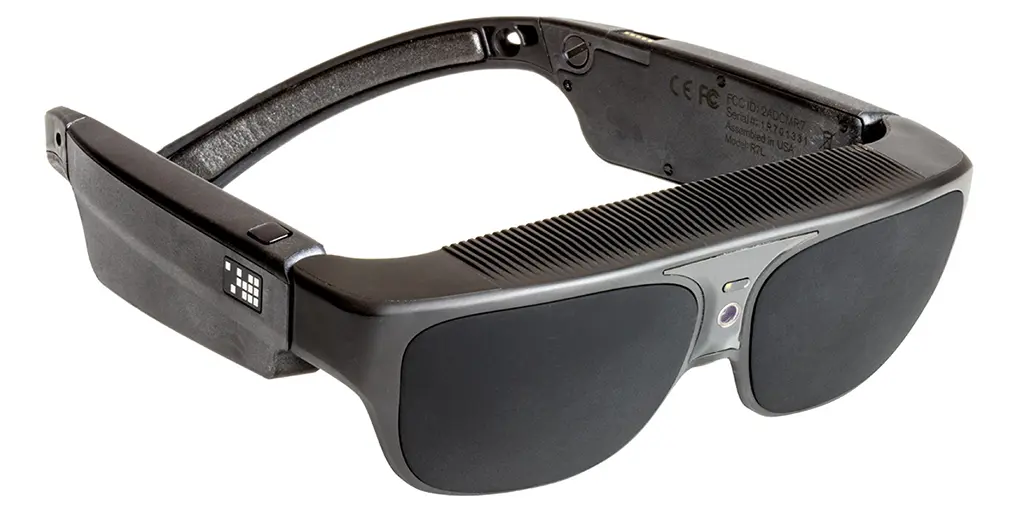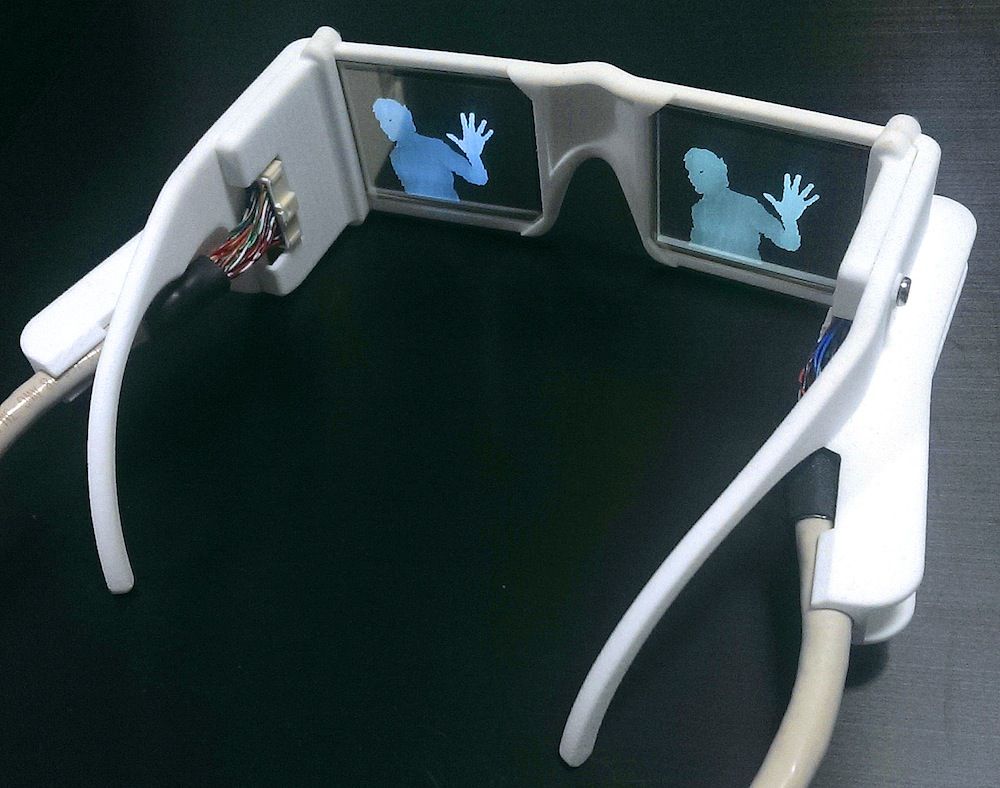Innovative Solutions in Assistive Technology for Visual Problems
The landscape of assistive modern technology for aesthetic disability is developing rapidly, offering a variety of innovative services that enhance access and freedom. From sophisticated mobile phone applications that help with navigation to wearable tools made for real-time support, these tools are reshaping the experiences of those with visual disabilities. The combination of smart home modern technologies and academic resources has the possible to promote greater neighborhood engagement. Nonetheless, the ramifications of these innovations increase crucial inquiries regarding their accessibility and efficiency in diverse contexts, necessitating a better examination of their wider impact.
Developments in Mobile Phone Applications
Recently, advancements in mobile phone applications have considerably changed the landscape of assistive innovation for individuals with visual disabilities. These applications take advantage of the effective sensors and abilities of modern-day smartphones to offer individuals with devices that improve independence and access in their every day lives.
Notable among these innovations are applications developed for object recognition, which utilize the smart device's camera to recognize products and offer verbal summaries. Such functions empower users to browse their atmospheres better, whether identifying items in stores or locating individual possessions at home. In addition, text-to-speech applications have improved dramatically, making it possible for individuals to capture published text via their gadget's camera and obtain immediate audio comments, thereby facilitating analysis and comprehension.
Community-driven applications have actually fostered social interaction and source sharing amongst individuals with aesthetic problems, producing an encouraging network that enhances their quality of life. Generally, smartphone applications have ended up being essential allies in advertising autonomy and ease of access for people with visual disabilities.
Wearable Tools for Navigation
Wearable tools for navigation have arised as a groundbreaking service for individuals with aesthetic problems, using hands-free aid that enhances movement and alignment. These tools usually use innovative innovations, including GPS, ultrasonic sensing units, and artificial intelligence, to supply real-time responses and direction to users as they browse their setting.
One significant instance of wearable navigation modern technology is wise glasses, which can spot barriers and relay auditory or haptic comments to the user, enabling for efficient and secure movement in numerous settings. Various other devices, such as belts and vests equipped with sensing units, can similarly notify users of their environments by providing informs about close-by things or modifications in surface.
Additionally, several wearable devices incorporate with smartphone applications, allowing users to tailor their navigation preferences and obtain tailored path ideas. This customization can considerably boost the user experience, equipping people to travel with higher self-confidence and freedom.
As technology remains to create, the potential for wearable navigation gadgets to enhance the lifestyle for people with visual problems continues to be substantial, leading the way for even more available and comprehensive settings.
Smart Home Technology Combination

Moreover, clever devices equipped with tactile interfaces or auditory responses provide intuitive interactions that provide particularly to the requirements of those with visual impairments. Smart fridges can announce their materials and expiration days, while wise stoves can assist users via the cooking process with audio directions.
Home automation systems, such as clever doorbells and security electronic cameras, supply tranquility of mind by allowing customers to receive signals and access live feeds using their smart phones, boosting personal security (AI-powered visual aids). Additionally, combination with smart devices and tablets guarantees that customers can manage their home atmosphere from anywhere within their properties
As smart home innovation proceeds to evolve, it holds the prospective to change the living experiences of people with visual disabilities, cultivating freedom and improving high quality of life in a progressively linked world.

Educational Devices and Resources
Access to efficient instructional tools and resources is important for people with aesthetic impairments, as it equips them to involve totally in their learning experiences. Various assistive innovations have been created to boost accessibility and foster independent knowing. Screen visitors, for example, convert text into speech, enabling trainees to accessibility electronic web content flawlessly. AI-powered visual aids. In addition, refreshable braille display screens provide tactile feedback, making it easier for learners to interact with written product.
In addition, instructional software application particularly developed for visually damaged individuals offers features such as high-contrast settings and adjustable text dimensions. These tools accommodate varied discovering styles and ensure that pupils can tailor their educational experience to their demands.
Moreover, access to electronic libraries and audio publications broadens the series of readily available discovering materials, making it possible for trainees to discover topics in depth without the restrictions imposed by typical print resources. Joint platforms that include availability features likewise facilitate team tasks, making sure that aesthetically impaired pupils can contribute meaningfully along with their peers.
Community Assistance and Engagement
A robust network of area support and involvement is vital for individuals with visual problems, promoting a comprehensive environment where they can prosper. Community organizations, neighborhood advocacy groups, and volunteers play an essential role in offering sources, details, and friendship, which are essential for boosting the high quality of life for those impacted by he has a good point visual problems.
Engagement tasks such as workshops, gatherings, and assistance teams not just facilitate ability development but likewise advertise social communication, decreasing sensations of isolation. These campaigns encourage people to share successes, difficulties, and experiences, thereby strengthening community bonds. Furthermore, collaborations with regional businesses can cause better accessibility in public spaces, even more integrating individuals with visual impairments into the neighborhood.
Innovation additionally boosts neighborhood interaction via online systems that supply digital assistance groups and resources, permitting people to connect no matter geographical barriers. By taking advantage of both digital and in-person solutions, areas can develop a comprehensive assistance network. Eventually, cultivating partnership among different stakeholders-- consisting of family members, teachers, and health care experts-- ensures that individuals with aesthetic disabilities get the additional hints all natural assistance required to browse day-to-day live efficiently and with self-respect.
Conclusion
Cutting-edge solutions in assistive technology for aesthetic problems dramatically enhance the high quality of life for individuals dealing with these challenges. The assimilation of mobile phone applications, wearable devices, clever home innovation, and educational tools promotes better independence and availability.
The landscape of assistive technology for visual problems is advancing quickly, providing an array of ingenious remedies that improve access and independence. Community-driven applications have actually fostered social interaction and source sharing among individuals with aesthetic problems, creating a supportive network that improves their high quality of life. Overall, smartphone applications have actually come to be important allies in advertising freedom and accessibility for individuals with visual disabilities.
Several people with visual disabilities are locating greater autonomy with the assimilation of wise home technology.Ingenious services in assistive technology for aesthetic problems dramatically enhance the quality of life for individuals dealing with for eyes these difficulties.